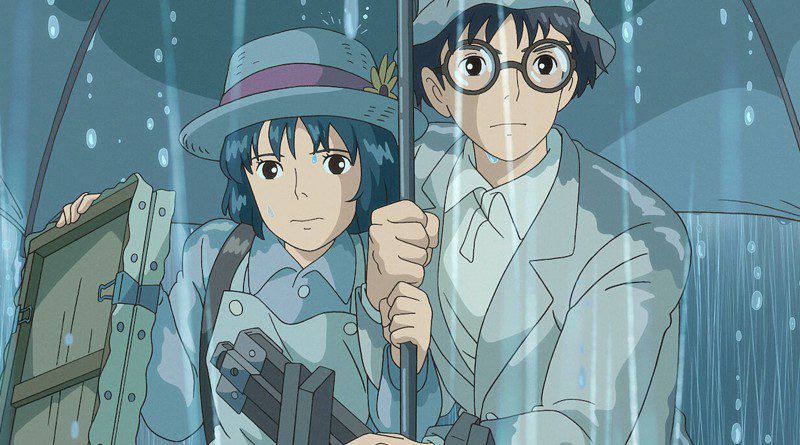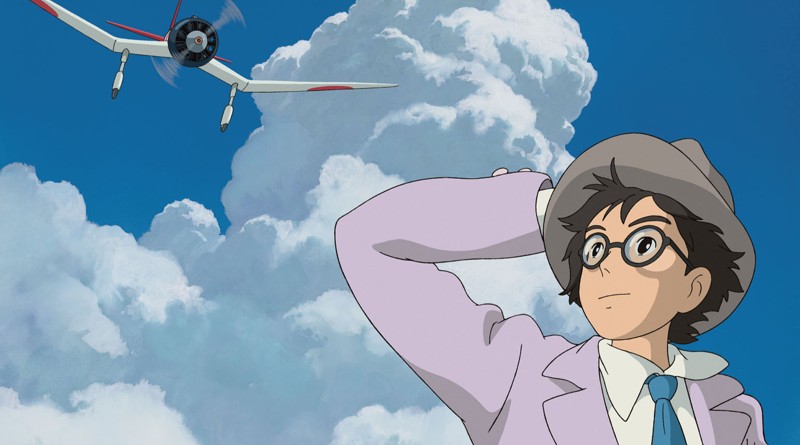The Wind Rises 風立ちぬ (2013) Review
Hayao Miyazaki’s swan song is a heartfelt and beautifully animated motion picture, even though it’s far from his best work. From the beginning of his animation career in 1963 in Toei Animation, the establishment of the now-legendary Studio Ghibli which he co-founded with fellow director Isao Takahata and producer Toshio Suzuki, and right down to enjoying his string of international success with award-winning animated features such as Princess Mononoke (1997) and Spirited Away (2001), Hayao Miyazaki has certainly left a long-lasting legacy in the world of animation. Unfortunately, all good things must come to an end when Miyazaki announced his retirement on September 1, 2013, that his latest animated feature, The Wind Rises, would be also his final work.
Inspired by the life of Jiro Hirokoshi, a Japanese aeronautical engineer and creator of the Mitsubishi’s “Zero” fighter plane, as well as the classic Japanese novel Kaze Tachinu, The Wind Rises centres on Jiro (voiced by Hideaki Anno), who has a lifelong dream of aeroplanes ever since he’s a schoolboy. From time to time, he often dreams of the Italian aeronautical engineer hero, Count Gianni Caproni (Nomura Mansai). In his dream, Caproni encourages him to follow his passion and make his dream come true.
After leaving school, Jiro continued his studies at the university in the hope of becoming an aeronautical engineer. One day on his way back to Tokyo from a holiday, he meets a young girl named Nahoko (Miori Takimoto) and her maid on the train. During this time, the Great Kanto Earthquake of 1923 hit and caused widespread fire all over the city of central Honshu. Jiro is kind enough to help Nahoko’s maid, who suffered a broken leg, and ensures that both she and Nahoko are safely returned to the family home. However, before the family can even know his name, Jiro leaves quickly to hurry back to the university and tries to save the library books from burning in the flames.
Years later, Jiro finally graduated and started working at the Mitsubishi aeroplane manufacturer as a fighter plane designer. Unfortunately, the project fails, and he is sent to Germany to study the all-metal designs of Hugo Junkers. Then, while on vacation in the summer countryside, he crosses paths with Nahoko again and both of them eventually fall in love. They soon decide to marry, even though Nahoko is infected with tuberculosis.
While Nahoko tries to recover from her illness in a secluded sanatorium, Jiro is working hard to design a fighter plane. But Nahoko misses her husband very much and decides to return to Jiro. The presence of Nahoko has certainly inspired Jiro to work harder as he strives to complete his design masterpiece on the Mitsubishi A5M, which later became his first successful aeroplane.

Visually speaking, The Wind Rises is an artistic triumph for Hayao Miyazaki’s trademark hand-drawn animation. The background visual of the rural landscape is especially majestic to look at while Miyazaki’s regular collaborator Joe Hisaishi shines in his exquisitely classical score throughout the movie. The same also goes for the opening dream prologue of Jiro flying an aeroplane around the beautiful countryside of his home, and the tender moment where Jiro tries to impress Nahoko with his paper plane.
The story, especially the way Miyazaki presented his love theme between Jiro and Nahoko, is genuinely sweet and heartfelt. It’s almost like watching Hollywood’s golden era of classic romance. The characters are beautifully realized, but the real scene-stealers here are Miori Takimoto’s emotionally penetrating vocal performance as Nahoko and Masahiko Nishimura’s often funny portrayal of Jiro’s grumpy boss, Kurokawa.
At 126 minutes, The Wind Rises tends to drag a lot throughout the movie, especially during the middle part where everything is leisurely paced to a near standstill. While The Wind Rises feels like a mile away from one of Miyazaki’s best works (e.g. Spirited Away), this animated feature remains a decent effort worth watching.





